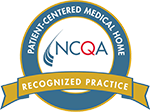Signs Your Child May Have a Vision Problem
During your child’s annual well visit, we check their vision to ensure there aren’t any problems. As preventative medicine specialists, we are responsible for identifying potential issues as early as possible. But since we don’t see your kids more often, it is essential for families to know the red flags that their child may have a vision problem. Here are some of them, broken down by age.
Vision Problem Red Flags in Babies
Under four months: It is not uncommon for a baby’s eyes to look misaligned (don’t focus together). Any misalignment should resolve by their fourth month of life. Regular inward crossing or outward drifting of their eyes is not typical. If you notice misalignment or regular inward or outward drifting of their eyes, notify their pediatric provider.
4-12 months: Babies this age should be able to track an object as it moves across their field of vision. If they cannot, reach out to their pediatric provider.
Vision Problem Red Flags in Preschool-Age Children
If you notice that your child’s eyes become misaligned (strabismus) or have a lazy eye (amblyopia), it is important to have them evaluated and treated, depending on the results. Strabismus and Amblyopia are best treated when a child is as young as possible when the results are most successful.
Vision Problem Red Flags for All Ages:
The following signs are red flags for any age, so please contact your child’s pediatric provider if you recognize any.
- Eye misalignment
- White or grayish color in pupil
- Fluttering eyes (side to side or up and down)
- Eye pain, itchiness, or discomfort
- Redness that doesn’t go away after a few days
- Pus in the eye
- Watery eyes
- Drooping eyelids
- Light sensitivity
At Rainbow Pediatrics, we use our Spot Vision Testing Camera, which is far superior to the traditional Snellen vision chart. This technology allows us to accurately examine the vision of children as young as six months of age. It can detect various vision problems, including nearsightedness (hyperopia), farsightedness (myopia), and astigmatism. It can detect eye misalignment (amblyopia), unequal vision power (anisometropia), and eye structural problems.
We’re here to help your child live their healthiest life. Please contact us if you have any questions or concerns about your child’s vision. Active patients of record can also schedule an appointment online.








